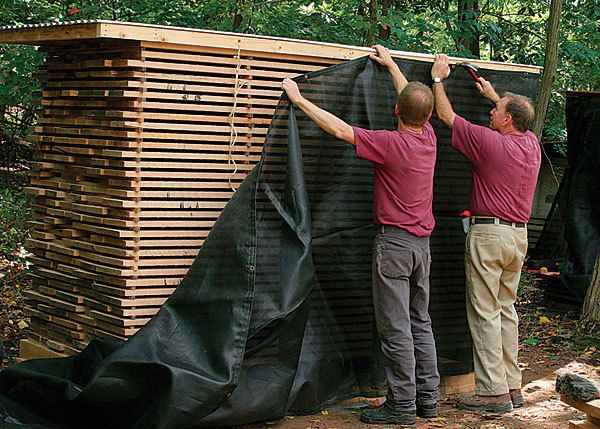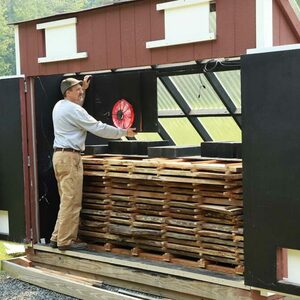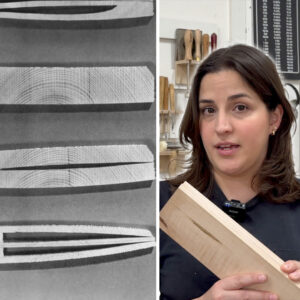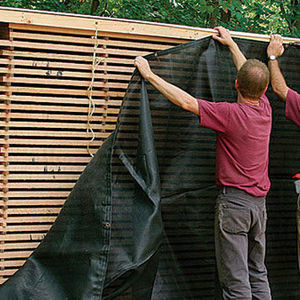Dry Your Own Lumber
Save money and get a year’s worth of beautiful boards
Synopsis: You can save money and enjoy the convenience of having a stockpile of great wood at hand if you learn to air-dry your own lumber. Dave Spacht, who has run a small sawmill for more than 25 years, demonstrates how to transform green wood into stable, seasoned boards. First, he’ll show you how to properly stack lumber outside. Then, after you wait for about a year while it dries naturally, you’ll take it indoors to complete the drying process. Use a little patience, follow Spacht’s recipe, and you’ll have dried boards with a minimum of warping, splitting, and end checking.
From Fine Woodworking #204
As home-shop woodworkers know, lumber is almost always the biggest cost when building a project. But there’s one way to cut down on the cash you spend on fine hardwoods: dry your own. Not only will you save money, but you’ll enjoy the convenience of having a stockpile of great lumber at hand. Also, many woodworkers believe that air-dried wood has richer color and better workability than kiln-dried wood.
Anyone can transform green wood into stable, seasoned boards with a moisture content (MC) of 7% to 9%, perfect for furniture making. You don’t need a kiln. You need only make sure the boards are properly stacked outside. Then you can kick back for about a year while Mother Nature evaporates most of the remaining moisture. At that point, in most places, you’ll be at about 12% MC. To complete the drying process, bring the boards inside a heated workshop. In as little as a few weeks (depending upon species, temperature, and humidity), they will be ready to use.
I’ve run a small sawmill in eastern Pennsylvania for more than 25 years, and I’ve made hundreds of stacks of wood (that’s me at right in the photo above). I’ll show you how to stack green lumber so that it dries with a minimum of warping, splitting, and end checking.
Where to get green lumber: First, you need some fresh-cut wood. Green wood can be had in a variety of ways. A fallen tree, as long as it’s not yet rotten, can be transformed into boards. or, if you know what you’re doing, you can cut down your own tree. Either way, the logs will have to be transported to a local sawmill or you’ll need to hire someone with a portable sawmill to come to your site. Expect to pay somewhere around 50¢ a board foot to have a portable sawmill cut your tree into boards.
Another option is to use a bandsaw to cut small logs into boards. You’ll need some sort of shopmade sled to support and carry the log. But the boards won’t cost you a nickel. You can find one version of the sled at FineWoodworking.com/extras.
You also can simply buy green boards. You probably won’t find them at a big hardwood dealer, but a small dealer is likely to have them. You’ll find a listing of small dealers, often called mini-mills, at FineWoodworking.com/extras.
A good stack dries wood at a comfortable pace: The secret to air-drying lumber is building a stack that lets the boards dry slowly but steadily—you can’t just toss a bunch of boards in a pile and expect them to dry perfectly.
For the full article, download the PDF below:
Fine Woodworking Recommended Products

DeWalt 735X Planer

AnchorSeal Log and Lumber End-Grain Sealer

Ridgid R4331 Planer























Log in or create an account to post a comment.
Sign up Log in